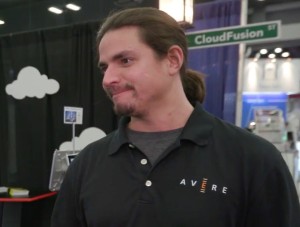In this video from SC15, Bernie Behn from Avere Systems describes how the company enables cloudbursting with its flexible hybrid cloud technology.
“The virtually infinite scale of cloud compute resources is now within easy reach from either existing network-attached or object-based storage. No longer is the location of your storage a roadblock to reaping the ease, timeliness, and cost offered by cloud compute services. Avere’s Enterprise Cloud Bursting solution utilizes the Virtual FXT Edge filer (vFXT) which puts high-performance, scalable NAS where you need it to enable massive compute on-demand for enterprise apps with simple installation and zero hardware maintenance. Avere makes your NAS data accessible to cloud compute without experiencing latency or requiring that your data be moved to the cloud.”
Transcript:
insideHPC: What’s new in Avere Systems at SC15?
Bernie Behn: Avere Systems is now offering you ultimate cloud flexibility. We’ve now announced full support across three different cloud service providers: Google, Amazon, and Azure. And now we offer customers to be able to move their compute workloads across all these different cloud providers and store data across different cloud providers to achieve ultimate flexibility.
insideHPC: I’ve been reading a lot about cloud bursting. How does Avere enable cloud bursting?
Bernie Behn: Cloud bursting is the concept of taking your application that no longer fit within your data center from a compute demand perspective, and moving them into the cloud where you have theoretical infinite compute capabilities. Some of the challenges involved with that are the storage piece of it and how do you access the data to your compute jobs are working against. So our technology enables the facilitation of moving these compute workloads without having a shovel your data up into the cloud and then dump truck it back down when you’re done with it.
insideHPC: How do you get around it? What’s the secret sauce there?
Bernie Behn: We’ve been doing this for quite some time just in the data center. Now that we can do it in the cloud, we have these capabilities of cashing file system data across various different topologies. So what we can do is we can take your petabytes upon petabytes of data that sit at rest on-premises and pull little bits and pieces of it into the cloud to compute against on demand and in real time.
insideHPC: I think I get it now, but I’m still trying to plug in. What about this hybrid cloud computing, how does that work with Avere Systems?
Bernie Behn: The whole idea behind hybrid is really the ability to use on-premises and cloud infrastructures in conjunction with each other, and offering flexibility to move between the two is what you benefit from with the hybrid cloud.
insideHPC: Okay, Bernie, well, this been a super computing show, lots of scientific researchers here. Can you give us a used case where these super computing guys, these university researchers, how they’re using Avere to get their work done?
Bernie Behn: Our really good one is the life sciences workflows, where people are generating data on-premises from, let’s say, genomic sequencing and the like, and then they have the need to compute on this data in the cloud. So their ability to be able to store the data on-premises temporarily while it’s being ingested and then compute upon in a cloud is one thing, but once they’re done consuming the data on-premises they have no need to store it there anymore. So it makes it ideal to store it in the cloud at that point and then you can reverse the equation say, well, if I need the compute on it again on-premises, I still have access to the data through the hybrid cloud capabilities of our solution.
See our complete coverage of SC15 * Sign up for our insideHPC Newsletter





